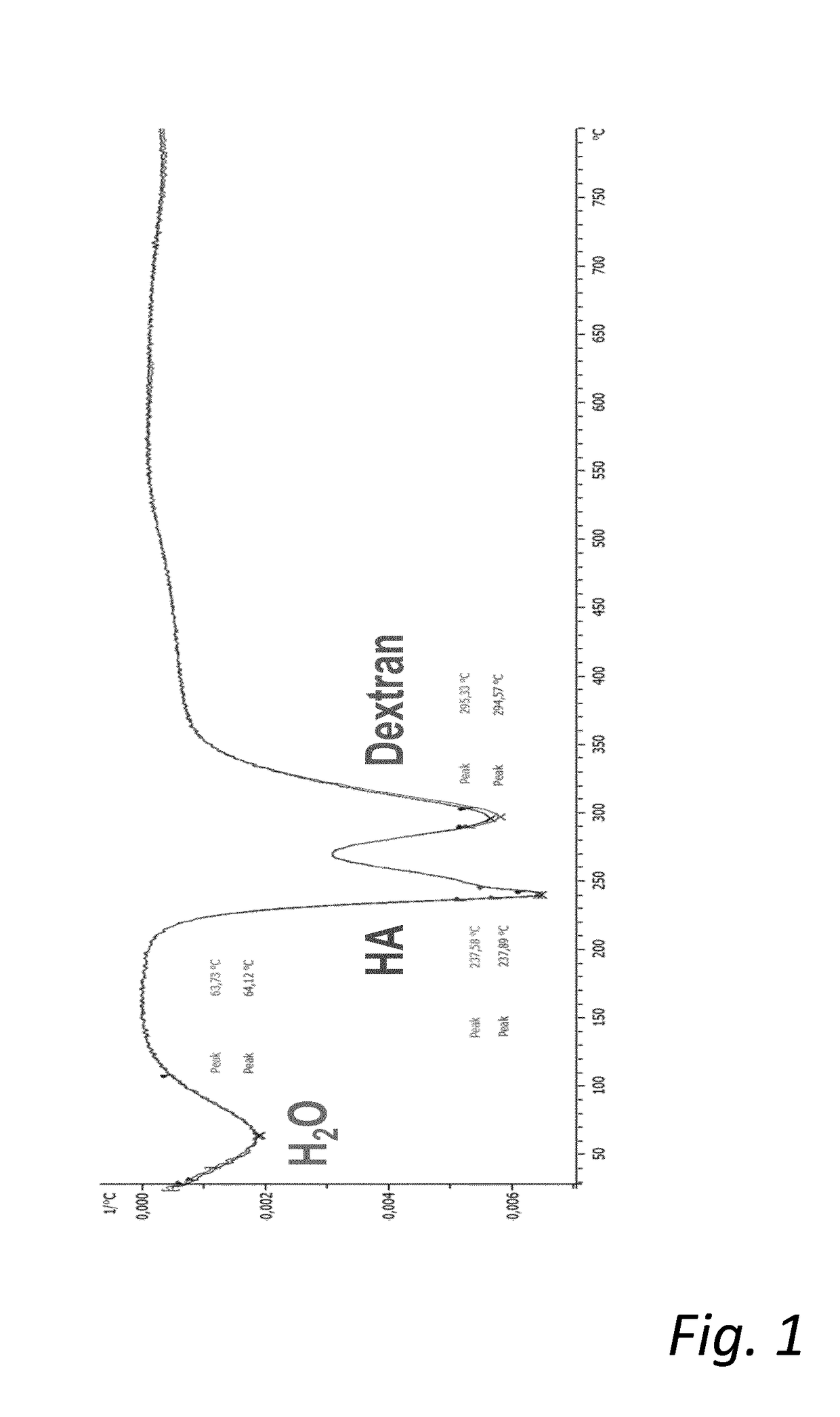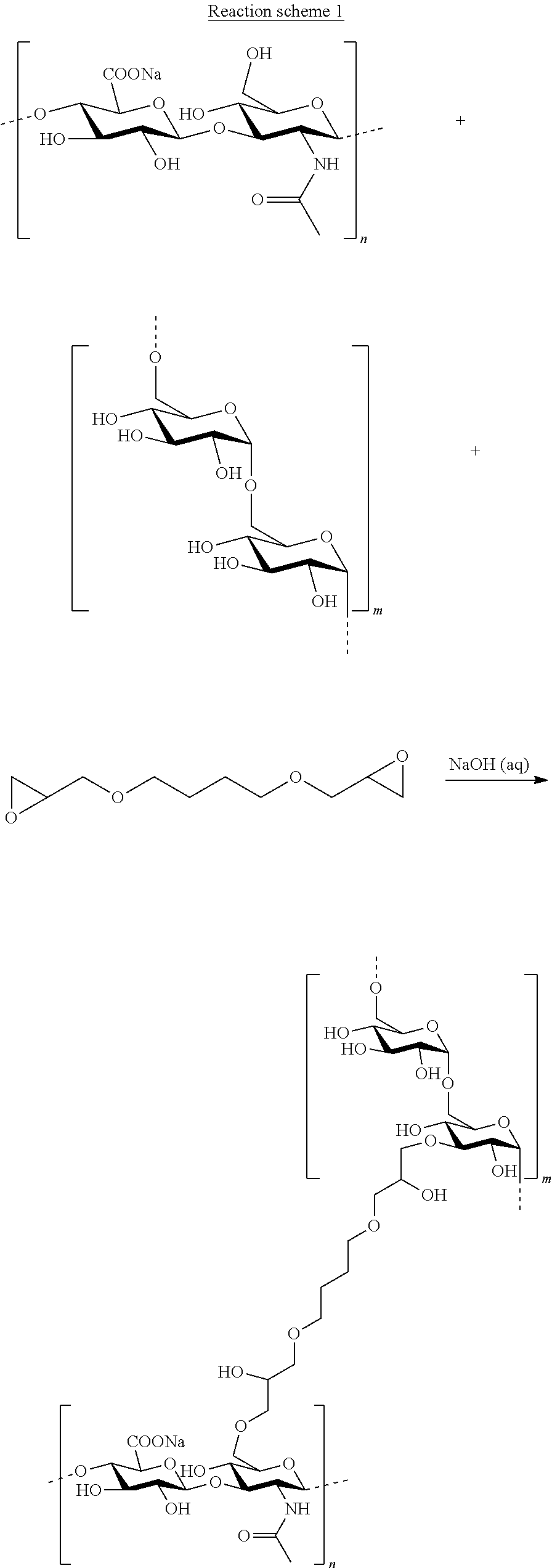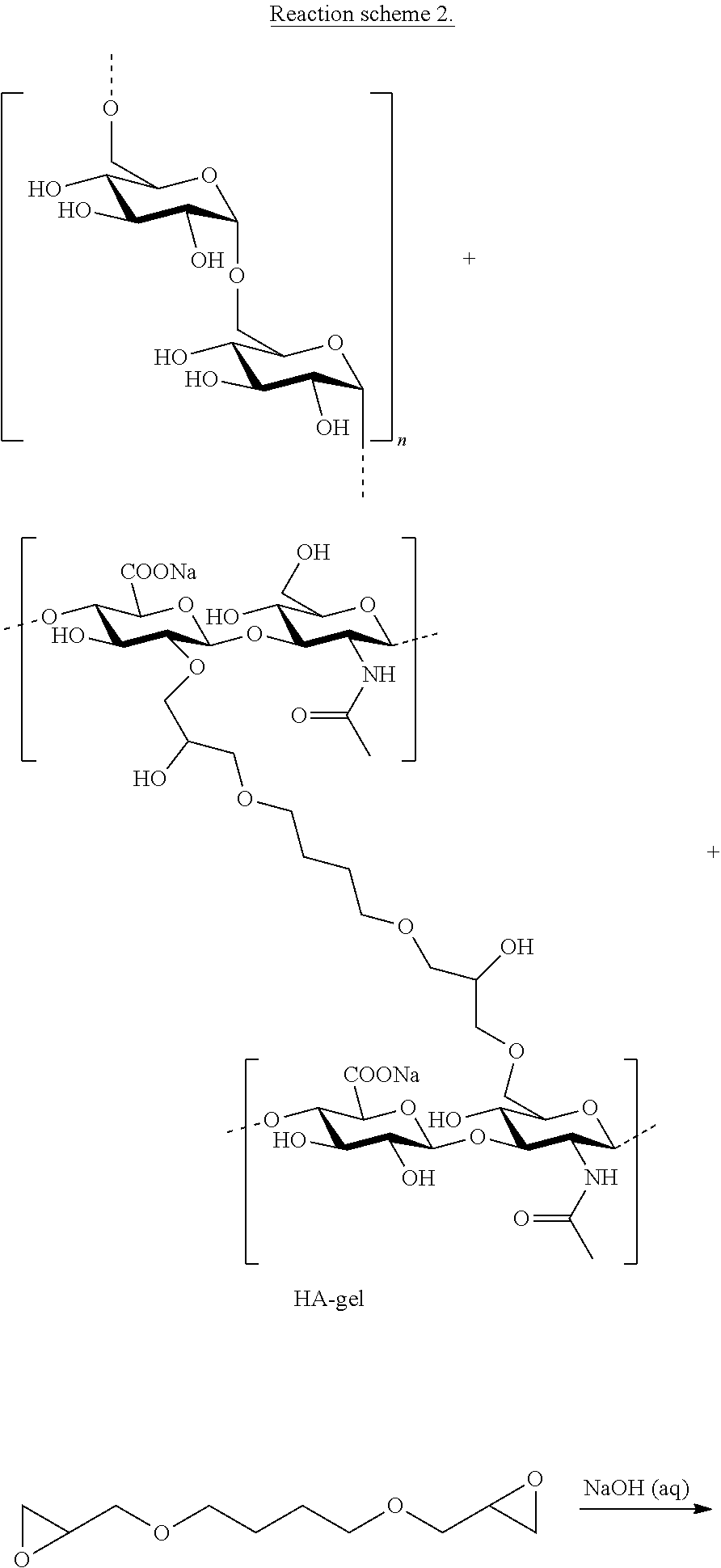Mixed hydrogels of hyaluronic acid and dextran
a technology of hyaluronic acid and hydrogel, which is applied in the field of hydrogels, can solve the problems affecting the liquid retention capacity of the hyaluronic acid molecule, and achieve the effects of improving durability, reducing susceptibility to enzymatic degradation, and improving stability to heat degradation
- Summary
- Abstract
- Description
- Claims
- Application Information
AI Technical Summary
Benefits of technology
Problems solved by technology
Method used
Image
Examples
example 1a
—Dextran (500 kDa)
Experiment
[0100]Dextran (500 kDa) was dissolved in 0.25 M NaOH in a 50 mL Falcon tube. HA (1 MDa) was added to the dextran solution and vigorously mixed. 0.1 mmol BDDE per gram polysaccharide was added to the dextran-HA mixture. The cross-linking and the treatment of the resulting material were done according to the general procedure described in Examples 1 and 2 of international patent application WO 97 / 04012 (Ågerup et al.).
Characterization
[0101]The gel content of the gel was between 70 and 80% with a concentration of dextran of 9-11 mg / mL and a concentration of HA of 13-14 mg / ml. The total concentration of polysaccharide was 23-25 mg / m L. The degree of modification (MoD) was between 1.1 and 1.2%.
example 1b
—Dextran (500 kDa)
Experiment
[0102]Twelve gels using dextran 500 kDa and HA 1 MDa were made with varying concentrations of BDDE and NaOH, see the values in the table below. The cross-linking and the treatment of the resulting material were done according to the general procedure described in Examples 1 and 2 of international patent application WO 97 / 04012 (Ågerup et al.).
Characterization
[0103]Swelling factor and rheometry (G′ at 0.1 Hz) were analyzed and the results are presented in the Table 1.
TABLE 1mmol [BDDE] / Swelling g[NaOH]factorG′Experimentpolysaccharide(M)(mL / g)(Pa)10.030.82.10.520.041.32.90.530.051.83.00.440.031.33.50.250.031.84.40.160.041.83.60.270.051.32.70.680.071.82.80.590.062.83.10.2100.072.82.80.3110.082.82.40.4120.0872.752.2428
example 2
)—Dextran (1 kDa)
Experiment
[0104]Dextran (1 kDa) was dissolved in 0.25 M NaOH. HA (1 MDa) was added to the solution. 0.1 mmol BDDE per gram polysaccharide was added to the dextran / HA mixture. The cross-linking and the treatment of the resulting material were done according to the general procedure described in Examples 1 and 2 of international patent application WO 97 / 04012 (Ågerup et al.).
Characterization
[0105]The gel content for dextran of the gel is 15% and 80% for HA with a concentration of dextran of 9 mg / mL and a concentration of HA of 37 mg / ml. The total concentration of polysaccharide is 45 mg / mL. The degree of modification (MoD) was 4.2%. Furthermore, when cross-linking HA (1 MDa) and dextran (1 kDa), it was surprisingly found that an increase of BDDE did not result in an increase in dextran incorporation to the network.
PUM
| Property | Measurement | Unit |
|---|---|---|
| size | aaaaa | aaaaa |
| molecular weight | aaaaa | aaaaa |
| weight average particle size | aaaaa | aaaaa |
Abstract
Description
Claims
Application Information
 Login to View More
Login to View More - R&D
- Intellectual Property
- Life Sciences
- Materials
- Tech Scout
- Unparalleled Data Quality
- Higher Quality Content
- 60% Fewer Hallucinations
Browse by: Latest US Patents, China's latest patents, Technical Efficacy Thesaurus, Application Domain, Technology Topic, Popular Technical Reports.
© 2025 PatSnap. All rights reserved.Legal|Privacy policy|Modern Slavery Act Transparency Statement|Sitemap|About US| Contact US: help@patsnap.com



